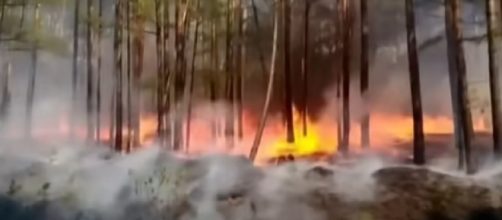The world cannot ignore anything associated with climate. In recent years, the world witnessed destruction unleashed by disasters like floods, wildfires, storms, and extremely high temperatures. Disasters usually mean the loss of wildlife, human habitats, and infrastructure. There is also disruption in travel attributable to damaged roads or bridges. These are indications of the deteriorating health of the environment because of climate change. Over time, these might become the revised norms of climate. National Trust is a charity that carried out its annual review of wildlife and nature.
It described the impact of climate change on the wildlife species in the U.K. Butterflies are one species that saw a depletion in numbers. This was the general trend noticed in different parts of the country, as recorded in the Butterfly Conservation’s Big Butterfly Count.
The Independent U.K. talks about birds that we cannot adapt to climate changes. There have been instances of some of them being found dead or dying on the coasts. Researchers are trying to ascertain the reasons. Then there are the terns. Some of them thrived while others fell victims to rising sea levels apart from human disturbance, predators, and events like storms around the breeding season. A news report of February 2020 said climate changes could bring irreversible ecological ruin unless it is checked.
Wildfires and storms due to climate change uprooted hundreds of trees
Extreme weather gave rise to wildfires and storms that devastated the environment. These are examples of the damages caused by climate change. The uprooting of trees and electric poles is common, leading to disruption of power. Wildfires burn down hundreds of acres of land, and wildlife loses their habitats and even perish.
Restoring the ecological balance is a long-drawn process. Heavy rainfall after long periods of dry weather means soil erosion that aggravates the situation.
Moreover, climate change increases the risk of disease in the trees. The loss of the green cover adds to a disturbance in the ecological balance. The environmental agency warns that the world must adapt to climate change or perish.
Heatwaves and heavy rainfall are effects of climate change
Climate change is rewriting the theories of survival. Extreme weather events are the new normal. Heatwaves and heavy rainfall are becoming more frequent and more intense. There is a visible altering of landscapes, and it might be permanent. It is difficult for some species of wildlife to adjust to the changes. Their population would decline, and they could face the threat of extinction. Conservation activities can help to protect and restore wildlife. That would allow nature to weather the storms.
Climate-related disasters affect wildlife
According to U.K. News Yahoo, the current year witnessed many disasters like storms, rainfall, and wildfires in parts of the U.K.
These, apart from extreme events and occasional unseasonal conditions, resulted in a wildfire that downed thousands of trees. Climate change hurt butterflies and birds. Incidentally, March and April were the driest months since 1862, and wildfires erupted at several places. These destroyed a wide variety of plants and posed a threat to the birds. An official at the National Trust says: “Climate change is making some forms of extreme weather events the new normal.” He went on to add that the frequency and intensity of heatwaves and heavy rainfall are increasing.


